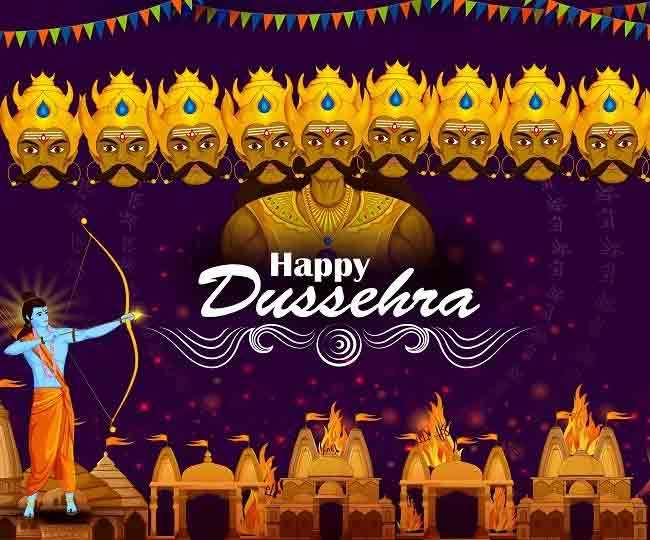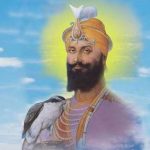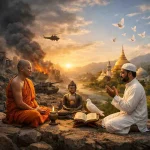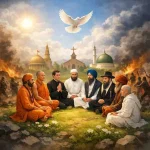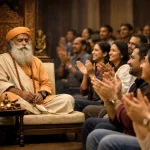Dussehra – Victory of Good over Evil
There are two important stories behind celebration of Dussehra festival in India. One story is associated with Lord Ram and another is associated with Goddess Durga. The festival of Dussehra signifies the victory of good over evil.
Read on to know more about the significance and celebration of Dussehra festival. You can also read this to your kids to tell them the importance of this festival.
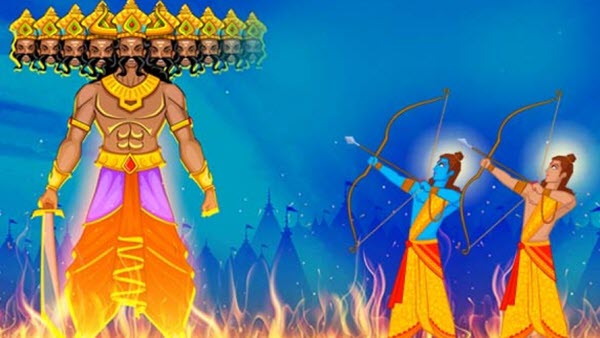
India is known as a land of festivals and celebrations. The festival continues for ten days and Dussehra is the tenth day. Many of the Hindu festivals are related to great epics like Ramayana and Mahabharata and Dussehra is one of the main ones.
In fact it is believed that the war between Ram and Ravana went on during these 10 days and Ravana was killed by the hands of Ram on the tenth day.
Dussehra is also called Vijayadashami and is celebrated as victory of Goddess Durga over the demon Mahisasura. The festival of Dussehra falls in the month of September or October of the English calendar. The main message that it gives is victory of good over the evil and success of truth over lies.
Significance of Dussehra
The festival of Dussehra is unique in its perception and significance. According to the great Hindu epic Ramayana, Lord Ram killed Ravana on the tenth day that is Dussehra. It is called as triumph of virtue over sin or immorality. Ravana is said to have abducted Ram’s wife, Sita and was also known as a dictating ruler. The end of Ravana meant end of bad and evil spirit as he was a demon by birth too.

Throughout Navratri, Ramleela is organised in many parts of the country and people enjoy the enactment of the play based on Ramayana.
The festival of Dussehra is also known as Durga Pooja and in eastern part of India people worship Goddess Durga all the nine days and celebrate Dussehra as it was on that day that the demon Mahisasura was killed by the Goddess.

The day marks the victory of the seventh incarnation of Vishnu – Lord Rama when he killed the ten-headed demon Ravana and thereafter handed over the throne of his kingdom Lanka to his brother Vibhishana. The word ‘Dussehra’ is derived from two Sanskrit words – ‘dasha’ and ‘hara’ – that mean defeating the ten, reported India.com. The day also marks the end of Durga Puja, where people remember goddess Durga’s victory over the buffalo demon Mahishasur, to help restore Dharma.
Durga led a battle against Mahishasur and it lasted for nine days and nine nights. Durga killed Mahishasur on the tenth day. Therefore, different manifestations of goddess Durga are worshipped during the nine-day long Navratri festival each year. Wherein the tenth day is dedicated to Durga as Vijaydashmi. The feminine power is worshipped and celebrated during the festival of Navratri. Navratri celebration culminates with Dussehra on the tenth day, when the idol of goddess Durga is immersed in a river or a lake, reported India.com.
People celebrate the festival in different ways across the country. In North India, various colorful fairs are organised. Plays based on the story of Ramayan, which is known as Ramleela are performed. On the day of Vijaydashmi, huge effigies of Ravan, Meghnad and Kumbhakarn are also set on fire. Whereas in places like Odisha and West Bengal, as per the report, the idol of the goddess is immersed in a river or a lake on the day of Vijaydashmi.
Importance of Dussehra
The word Dussehra’ is derived from dasha and hara’, two Sanskrit words that mean defeating the ten. The festival also marks the end of nine-day long Navratri festival, during which the nine forms of goddess Durga are worshipped. Navratri celebration culminates with Dussehra on the tenth day, when the idol of goddess Durga is immersed in a river or a lake. The festival is not just celebrated in India, but also in Nepal, Sumatra and Java.

According to Hindu epic Ramayan, this is the day when Ram, who is the seventh incarnation of Vishnu, killed Ravan, the ten-headed demon king. Ravan had abducted Sita, Ram’s wife, and took her to his kingdom Lanka. Ram along with the monkey god Hanuman, his brother Laxman and an army attacked Lanka to rescue Sita.
On the day of Ashvin Shukla Dashami Ram killed Ravan and rescued Sita. This day is now called Vijayadashmi, which means victory on the tenth day. They returned to Ayodhya 20 days after Viajaydashmi. The people of Ayodhya, to welcome home their beloved prince, lit millions of lamp and this day is now celebrated as Diwali in India.

Dussehra is also associated with goddess Durga. It is the day when goddess Durga killed Mahishasur, a demon, after a fierce fight. According to mythology, Mahishasur was growing in power and defeating the gods. The gods asked the trinity of Vishnu, Shiva and Brahma to help them. The three gods merged their power and created Durga.
All the gods gave their weapons to the goddess to fight the demon. She led a battle against Mahishasur and it lasted for nine days and nine nights. Durga slayed Mahishasur on the tenth day. During the festival of Navratri, different manifestations of goddess Durga are worshipped. The tenth day is dedicated to Durga. During the festival of Navratri, the feminine power is worshipped and celebrated.
Legends of the Dussehra Festival
According to legends, the Pandavas, the five sons of Pandu, were exiled for 12 years after losing a game of dice. During their exile period, they had to conceal their identity. So before entering the kingdom of Virat, they hid their weapons in a Shami tree.
They completed their final year of exile and on Vijaydashmi, they disclosed their true identity and recovered their weapons from the tree. Today, on the day of Vijayadashmi, both weapons/tools and Shami trees are worshipped. The leaves of Shami tree are exchanged as a symbol of goodwill.
There is another story associated with Dussehra. According to legends, Kautsa, the son of a Brahmin, studied under the guidance of Rishi Varatantu. After his education, he insisted on giving a present to his teacher. Rishi Varatantu refused to take dakshina from his student as he believed that it is inappropriate to give dakshina for wisdom.

However, Kautsa did not agree and insisted on giving dakshina. Varatantu asked 140 million gold coins for his knowledge. Kautsa asked King Raghu to help him as he didn’t have that much money. King Raghu was known for his generosity and he promised to help Kautsa.
King Raghu asked Indra to help him and Indra turned to Kubera, the god of wealth, for help. Kubera made gold coins rain from Aapati and Shanu trees in King Raghu’s city, Ayodhya, on the day of Vijayadashmi. The gold coins started raining. The coins were given to Kautsa and he offered it his guru Varatantu.
As Varatantu had asked for only 140 million gold coins, he gave back the remaining coins to Kautsa. Kautsa went to the King to return the coins but he refused to take it back as it was a gift. So, Kautsa distributed the remaining gold coins among the people of Ayodhya.
@religionworldin
[video_ads]
[video_ads2]

